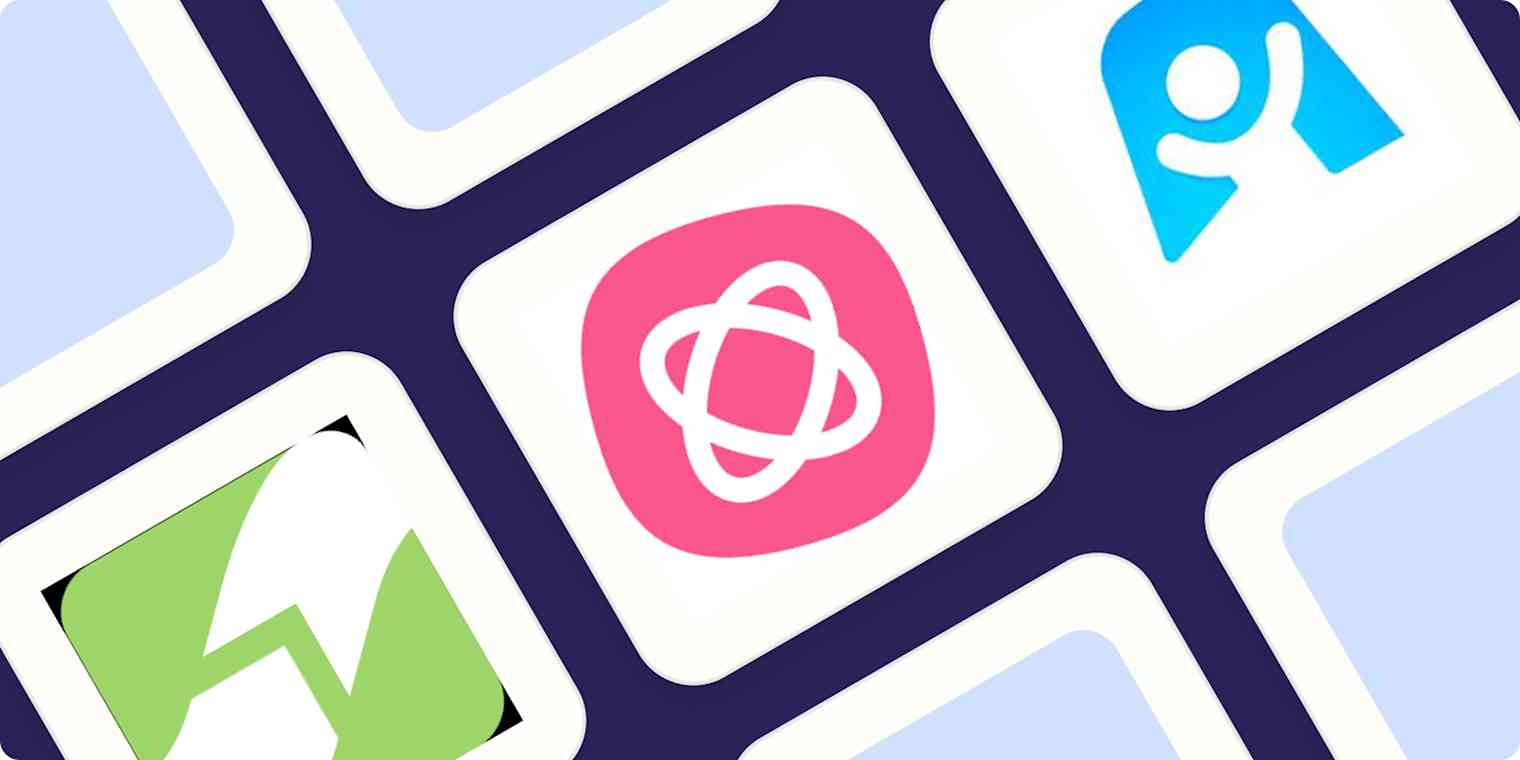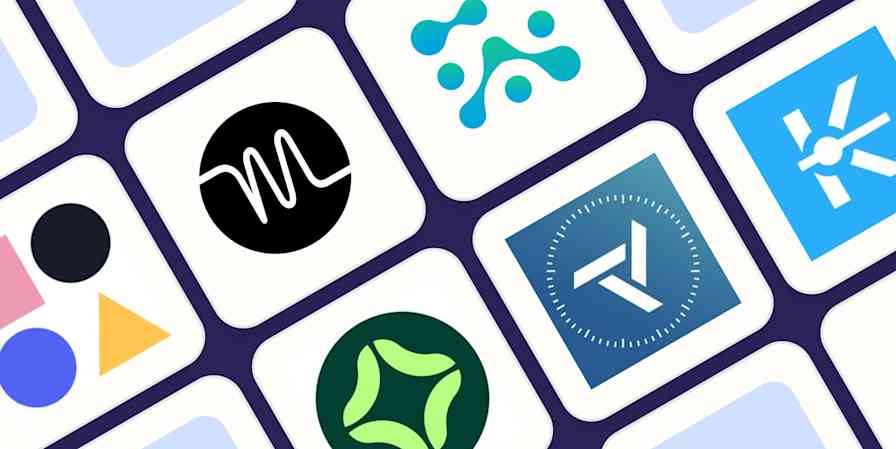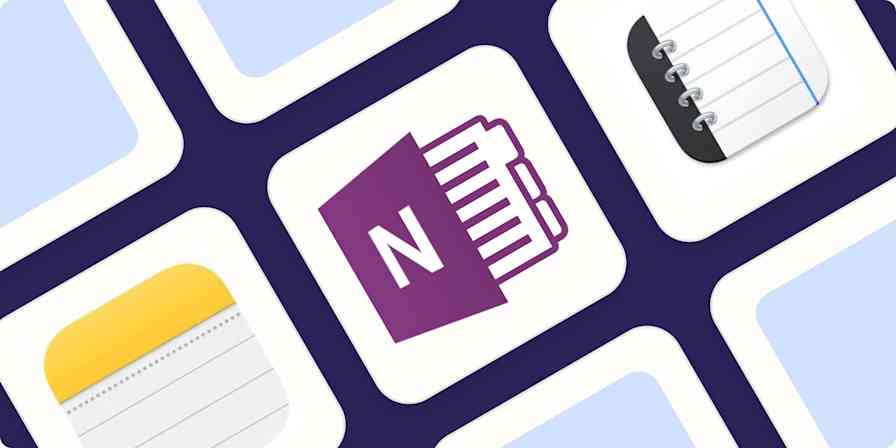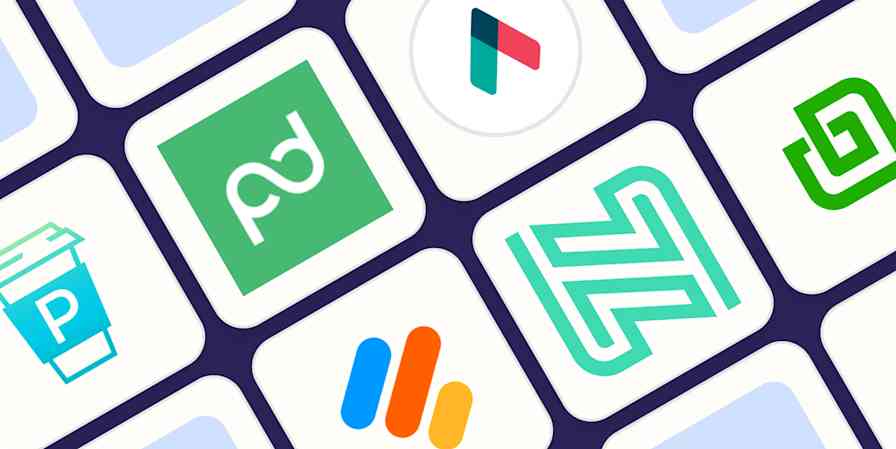Mind mapping is a creative way to brainstorm and find connections between different ideas. Done right, it's a great way to come up with new ideas and solutions to tricky problems, outline an article or presentation, and generally just get your thoughts in order. While it can be done as a group, it's often a solo practice.
I do most of my mind mapping digitally—and even when I don't, I often recreate a paper mind map online so that I can have it safely stored and easily searched. (It's a weird hybrid approach, but it works for me.)
Over the past several years of updating this list, I've tested close to 50 different mind map tools, many multiple times as they've been updated and added new features—AI included. I've also made dozens of mind maps myself, both on paper and digitally. Pen and paper set a very high bar to clear, but these are the five best mind mapping apps that manage to clear it.
The 5 best mind mapping tools
Coggle for mind map beginners and occasional use
MindMeister for collaborating on a mind map with a team
Ayoa for a modern approach to mind mapping
MindNode for Apple users
Xmind for personal brainstorming
What is mind mapping?
Traditionally, a mind map is done with a pen (or, ideally, loads of colored pencils or markers) and paper. You start by writing a central idea or theme in the middle of a blank sheet of paper. Then the fun starts: around your central theme, you create "nodes" connected by lines, each with its own related idea or theme. For example, if the central theme was "Summer" (say, for a marketing campaign), the first five or so nodes might be "Good weather," "BBQs," "Vacation," "Air conditioning," and "School's out"—or whatever else it is that you think of when you think of summer.
From each node, you then repeat the process, drilling deeper into the different concepts. "BBQs" might lead to "Family time," "Good food," and "Burgers." "School's out" could lead to "Summer jobs," "Extracurriculars," and "Alice Cooper."
Some ideas will also connect back to other ideas. "Family time" could also link to "Good weather" and "Vacation." "Burgers" could link to "Summer jobs." But by getting all these branching concepts down on paper, you can start to see the relationships between different things and generate new ideas. Who'd have thought before we started brainstorming that Alice Cooper flipping burgers at a family BBQ (or maybe in a fast food joint?) could make for a killer summer ad? I didn't, but I'd definitely buy one.
What makes the best mind map software?
How we evaluate and test apps
Our best apps roundups are written by humans who've spent much of their careers using, testing, and writing about software. Unless explicitly stated, we spend dozens of hours researching and testing apps, using each app as it's intended to be used and evaluating it against the criteria we set for the category. We're never paid for placement in our articles from any app or for links to any site—we value the trust readers put in us to offer authentic evaluations of the categories and apps we review. For more details on our process, read the full rundown of how we select apps to feature on the Zapier blog.
Mind mapping with a sheet of paper and a pen is an incredibly intuitive and natural way to work. You just start drawing and go from there with almost nothing in your way.
While it's hard to beat for convenience, it does have its downsides. Unless you have a gigantic whiteboard knocking around, you're limited to a fairly small piece of paper. It's not searchable, and you can't easily undo things or make edits. And, worst of all, if you lose your mind map, you don't have a backup. So even though pen-and-paper mind mapping is a delightful way to work, it might be worth considering a mind mapping app instead.
While each mind mapping tool on this list has its own unique benefits, they all meet at least the following criteria:
It's actually a mind mapping app. A lot of drawing, diagramming, and flowchart apps are marketed as mind map apps—but they aren't. While you could make a mind map in them, you could also use PowerPoint, Photoshop, or MS Paint. You could even get a key and carve a mind map into your computer screen. Just because something can be used to make a mind map, doesn't mean it should or that it will do it well. These more general-purpose apps tend to lack the features that make creating a mind map digitally as easy as possible, like automatically linking nodes, brainstorming modes that let you get a lot of concepts down quickly, and search. For an app to make this list, I dug past the marketing and made sure it was designed from the ground up for brainstorming, not for drawing or creating professional diagrams or charts. A couple of mediocre templates just doesn't cut it.
It gets out of the way. Mind mapping with a pen and paper is a joy. No app is ever going to be quite as intuitive, but it should come as close as possible. After a short learning period to get up to speed, you shouldn't have to stop and think to create a node, or dig through menus to connect two ideas. Keyboard shortcuts, intuitive mouse clicks, and the app should just fade into the background—the same way your web browser does.
It offers an unlimited canvas. A digital mind map tool should have a practically unlimited canvas size, so you can make a mind map as big as you can conceive of, connecting huge numbers of ideas if you want. Using an app is all about overcoming the analog downsides, not reinforcing them.
It allows you to attach files. Sometimes you need more than a few words to fully illustrate a concept—and doodling is a big part of analog mind mapping. For an app to make this list, you need to be able to attach images, videos, documents, web pages, and other assorted extras to your mind maps. Actually being able to link to things is one of the big advantages that an app has over paper.
It allows you to save and export. You can't easily edit, save, or share your paper mind maps, so one of the big reasons to go digital is that you can. The best mind map software lets you come back to a mind map later and change it up, save it, and export it in different formats, so you can send it to your colleagues, classmates, or anyone else.
This is my fifth year keeping this list updated, so I'm very familiar with all the top picks—plus all the apps that come close to breaking into this list but just fall short. To test each mind map app, I use it. I start with some silly concept and just mind map away to see how it works and feels. (I'm always comparing things back to both paper and the other apps.) If it's nice to use and ticks all the boxes, it goes on a shortlist to be considered for inclusion. If it's awkward, gets in the way, or doesn't have a key feature, I leave it off the list (though all the testing notes get added to an increasingly complex spreadsheet so I can check if things improve next year). From that shortlist, I pull out the best of the best. So, here are the five best mind mapping apps.
The best mind mapping software at a glance
Best for | Stand-out feature | Pricing | |
|---|---|---|---|
Beginners and occasional use | Generous free plan | Free for up to three private diagrams; paid plans from $5/month | |
Collaborating with a team | Real-time collaboration and integration with MeisterTask | Free for up to three mind maps; paid plans from $7.50/month | |
A modern approach | Multiple mind map types and AI-powered features | Free for unlimited mind maps with limited features; paid plans from $17/user/month, billed annually | |
Apple users | Native app, iCloud sync, and integration with to-do apps | Limited free app; paid plans from $2.99/month | |
Personal brainstorming | Great cross-platform availability | Limited free plan; paid plans from $19.99/quarter |
Best free mind mapping software for beginners and occasional use
Coggle (Web)

Coggle pros:
Really easy to use, even if you've never done mind mapping before
Generous free plan
Coggle cons:
Only available as a web app
Interface is a little dated
Coggle is, in many ways, the mind map maker to beat. It's fast, intuitive, and easy to use (with great keyboard shortcuts)—even though it's only available through your web browser. Perhaps best of all, Coggle is free for up to three private mind maps (and unlimited public ones, but who wants those). As long as you save your mind maps as PDFs, plain text documents, or images, you can delete your old drafts and basically have unlimited free mind mapping for as long as you need. If you're only looking to use a digital option every few months, it's practically perfect.
Even though the interface is starting to look a little dated, Coggle is still packed with thoughtful touches. One of my favorite features is that you can format your mind map items and messages with Markdown, so you can get as fancy as you need to while adding your text, images, and links to the canvas. There's also collaboration built in. If you want to bounce some ideas off a colleague, you can go ahead and add them to your mind map, carry on a conversation in the messages sidebar, or go into full-screen presentation mode to take a step back and do more high-level ideation.
In short, for occasional mind mapping (whether on your own or with colleagues), Coggle nails it, and it's your best option for free mind mapping software. Its paid offering is fine, but at $50/year or $5/month, you should consider other more modern mind mapping apps.
Coggle pricing: Free for up to three private diagrams; $5/month for unlimited private diagrams and extra mind mapping tools (like additional shapes and color control).
Best mind mapping software for collaborating with a team
MindMeister (Web, iOS, Android)

MindMeister pros:
Great collaboration features
Lots of customization options
Integrates with MeisterTask if you want more of an all-in-one tool
MindMeister cons:
Extra features make it a little less intuitive
A bit pricey for solo mind mappers
MindMeister is one of the best collaborative mind mapping tools out there. It's a little less intuitive to use than Coggle, and some features—like exporting your mind maps as a PDF or image, or attaching images and videos—are limited to paid plans, which require you to pay for at least six months in advance, so it's a less enticing option for solo mind mappers. For teams, though, its collaboration features are great: you can add team members and guests to your mind map, leave comments for each other, and otherwise work together to brainstorm or present ideas.
It also has a sleek modern interface and plenty of customization options (including some more corporate layouts). Plus, it automatically aligns your nodes, which makes it easy to create great-looking mind maps that won't look out of place in a meeting room.
MindMeister is owned by the same people that make MeisterTask, a web-based, Kanban-style project management app. The two tools are integrated, so you can turn your brainstorm session into an actionable project, assigning individual items on a mind map to members of your team, tracking task progress, and syncing it all with your other project boards inside MeisterTask—which even integrates with Zapier.
For an in-depth look at what a sample MindMeister/MeisterTask project might look like, take a look at Zapier's article about how to jumpstart new projects with mind maps.
MindMeister pricing: Free for the Basic plan that includes up to three mind maps and real-time collaboration. From $45/6 months ($7.50/month) for the Personal plan that includes unlimited mind maps, file attachments, and PDF exports.
Best mind mapping software for a modern mind mapping approach
Ayoa (Web, iOS, Android)

Ayoa pros:
Fast, intuitive mind mapping
Consistently getting better year over year
Extra features, like options for neurodivergent users, AI, and task management
Ayoa cons:
Most expensive app on this list
Ayoa is one of the most interesting mind mapping apps on the list. It was created by Chris Griffiths, a mind mapping expert and author who has collaborated with Tony Buzan, the man responsible for popularizing mind mapping in the 1970s. Put simply, it's got a serious mind mapping pedigree—and it shows.
But Ayoa isn't stuck in the '70s. It's rapidly changing and innovating, which means I have to refamiliarize myself with the app every couple of months. A lot of features I've mentioned before, like the different kinds of mind maps, have all been consolidated into one super powerful and quick user interface. You can add ideas quickly with keyboard shortcuts, mouse clicks, a dedicated ideas bank, a fast entry mode, and more. Linking them is quick whether you use your keyboard or mouse, and they're all automatically arranged nicely into well-laid-out mind maps.
And Ayoa isn't just limited to basic (and not-so-basic) mind mapping. The chat, real-time collaboration, whiteboard, and task management features make it ideal if you're part of a small team looking to realize your ideas. It's also designed to be accessible to neurodiverse people. It's worth keeping an eye on their roadmap to see what features are coming down the line.
Ayoa has some of the more mature AI features, though in my testing, I didn't find them to be particularly useful for filling in a mind map. The one touch that stood out is that you can set a special interest (Ayoa suggests trains) so the content it generates will be more relatable to individual neurodiverse users. While this won't be useful for everyone, it shows the level of thoughtfulness that goes into the app—and may be an incredibly useful AI-powered option for educators, caretakers, and parents.
Ayoa pricing: Free for unlimited mind maps, though with limited features. From $17/user/month for Ayoa Ultimate plan with all features, plus AI, collaboration, tasks, and more.
Best mind mapping software for Apple users
MindNode (iOS, macOS)

MindNode pros:
Truly native feel on Mac, iPhone, and iPad
Easy syncing with all your devices
MindNode cons:
You can't access it on a web app
Most mind mapping apps are web apps, and if there's a native app available, it's really just a shell for the web app or a way to get things running on smartphones. It's fine if you want the collaboration, sharing, and other features you get with an online service, but what if you just want a simple way to brainstorm by yourself?
MindNode, a native Mac, iPhone, and iPad app, is perfect for Apple users (and when I'm in a big mind mapping buzz, it's my go-to app). Start a new map on one device, and it instantly syncs to your other devices using iCloud. The app is just as easy to use (and as powerful) whether you prefer to tap the plus icon to add a new node on your iPhone or click it on your Mac. And since it's a fully native app, no internet connection? No problem.
MindNode also has a load of other features that will keep you happy if you're deep in Apple's ecosystem, like a Quick Entry dialog in the Menu Bar on your Mac, Widgets for the Home screen or Notification Center, a Watch app, Apple Pencil support, and integration with popular to-do apps Apple Reminders, Things, and OmniFocus. There's even a version of MindNode available for the Apple Vision Pro—though I sadly wasn't able to test it because I don't have a spare $3,499 lying about. Still, it's pretty clear that Apple users of every stripe are catered to.
MindNode pricing: Free limited Mac and iOS app; $2.99/month for MindNode Plus with image support, tasks, themes, and styling options. MindNode is also available through Setapp, a $9.99/month subscription service with lots of Mac apps.
Best mind mapping software for personal brainstorming
Xmind (Web, Windows, macOS, Linux, iOS, Android)

Xmind pros:
Simple, fast, and easy to use
Great native apps cross-platform
Xmind cons:
Expensive for one person
If you just make mind maps by yourself and don't need to constantly brainstorm with other people, then a lot of the tools we've looked at are overkill. A lot of development time goes into supporting real-time collaboration, versioning, and the like. With Xmind, however, all that same dev energy goes straight into making mind mapping nicer, faster, and easier.
Xmind's native apps stand out in a sea of web apps. It's available on Windows, macOS, iOS, Android, and even Linux. If you need something cross-platform so you and your team can all use the same app, even if you aren't collaborating in real-time, it's hard to beat.
While it's subjective, I also feel that Xmind makes the nicest mind maps by default. It's got a slightly hand-drawn style that I wish I could mimic with a pen and paper. It's professional enough for the office (especially if you use the built-in Pitch mode), but also nice enough that you'll want to use it by choice.
Really, the biggest downside is that, at $19.99/quarter, it's expensive for one person—especially when you consider all the features it lacks compared to, say, Ayoa or MindMeister. If a nice solo offline experience is more important than the most features for the money, then it's easy to recommend. On the other hand, if you're not mind mapping that often or need to work in a more deliberate way with other people, it's probably not for you.
If you really want AI features, Xmind now has a web app called Xmind AI that's designed for collaborative brainstorming. I'm not sure that AI is particularly effective at mind mapping (I'll get into that more below), but the app still shares a lot in common with regular Xmind, so it may be worth checking out. There's a free trial, and AI plans start at $7.99/month.
Xmind pricing: Limited free plan; from $19.99/quarter for Xmind Pro.
If you're wary of subscription fees and want something for personal use, SimpleMind is a solid Xmind alternative. It's available from €27.49 for Windows or macOS (€49.99 for both), $10.99 for iOS, and $8.49 for Android.
What about AI mind mapping software?
Over the last two years as AI has taken off, some existing mind mapping apps have added AI mind mapping features, and some new AI-first apps have launched. While I've tested a lot of them, I'm not convinced they're a great way to mind map. Let me explain.
First, let's talk about the apps that promise to turn anything into a mind map. Give them a website, a PDF, an article, or anything else, and they'll create something that looks like a mind map. But here's the thing: the value in creating these kinds of mind maps comes from drawing the connections yourself. If you're trying to make a mind map to help you study the history of American independence, you need to draw out the themes and connections that resonate with you—that's what helps you remember them. Just getting an AI to generate a mind map with the most obvious points and connections isn't the same thing. Mind mapping is a process as much as it is the end results.
The other proposed way to use AI when mind mapping is to expand a node out into additional nodes when you're brainstorming an idea. This has some potential if you do it after you've already expanded things as far as you can, but I don't think it's a good idea if you jump straight to using the AI. Mind mapping is about drawing out interesting and unexpected conditions, not necessarily the most obvious ones—which is what AI models tend to suggest. If you use it later in the process to check that you or your team haven't missed something, that's all well and good. But I don't think it should be the first thing you use to get started.
This is all to say that AI features are potentially useful in certain situations (and we're all for using AI for brainstorming), so long as they don't get in the way of mind mapping. I didn't exclude any apps from this list just because they had AI, but I did exclude apps that put so much focus on AI that creating a mind map yourself was next to impossible.
Do you need a mind mapping app?
Mind mapping can be a great way to generate and connect ideas, but unless you do it all the time, you probably don't need a dedicated mind map creator—or at least not a paid one. Because, when it comes down to it, mind mapping software is just brainstorming software—and you can brainstorm pretty much anywhere. If you want a compromise, Coggle is a great place to start for free mind map software, since the free plan is pretty generous.
For teams, I'd also suggest you check out Zapier's list of the best whiteboard apps. They all have mind mapping templates, though the experience won't be quite as smooth as with a dedicated mind mapping app. It should be fine as long as you aren't trying to create mind maps every day.
Also, reconsider the pen-and-paper method. It's really hard to beat—which is why there are so many mind mapping apps available and so few on our list—and you can always take a photo of it to save it or share it. It's not as tech-y as an app, but it works if you don't make mind maps all the time as part of your job, or even in your personal life.
Related reading:
This article was originally published in February 2019 by Maria Myre. The most recent update was in July 2024.





